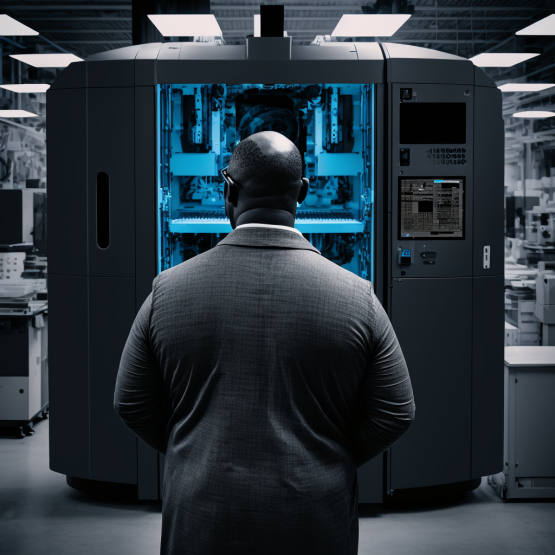
Dirty data costs the additive industry millions of dollars a year. Material parameter development, operational mistakes, or part failure could all be avoided if reliable, detailed and comprehensive data about previous production runs were available. Beyond the immediate savings, there are several other reasons why clean data is critical for the future of our industry:
- Firstly, it ensures accurate predictions and decision making, which optimizes processes, predicts failure and forecasts demand. Bad data = bad decision making.
- Secondly, it enables effective collaboration and communication within the manufacturing ecosystem. Even the simple case of proving the need for more machines hinges on clean utilization data to persuade management. It’s also critical to make sure that tribal knowledge within the organizations is passed on effectively.
- Thirdly, it is necessary for effective supply chain management, by keeping all parties informed about inventory levels and schedules. In the future, we might also be able to infer and compensate potential assembly problems in advance with all the right data available.
- Lastly, it ensures compliance with industry regulations, avoiding costly fines and penalties. It also helps in the development of those regulations and standards, giving the relevant committees access to the information. It can also help enforce those effectively, by sharing data with auditors.
Above all, clean data is critical for the future. Increasingly powerful AI programs rely on clean data to make effective decisions. If we want to get to “first time right”, then bad data is not an option, as it reinforces bad decision making.
And yet, the most common routes are closed to the additive industry. In additive, AI can’t build on deep data such as a single sensor providing data on millions of parts. Instead, the AI needs to be trained on contextual data from the full production process starting with the origin of the design, through the genealogy of the feedstock, to the actions of the operators and the output of the machines.
This makes the challenge of capturing clean data all the greater. Deploying the next generation technology relies on moving on from 20th century habits of doing everything on paper. To capture clean data from the full context of parts requires everybody to work together to move the processes onto a digital framework. That doesn’t mean users can’t use their favorite software to do the tool pathing, or have to forgo the meeting to sign off production. Just that these actions and decisions be integrated or digitally captured.
Open workflow solutions such as Authentise Flows AM can provide extensible ways to manage the process efficiently while capturing the process data. But without the collaborative effort of everybody in the organization to adopt and maintain such systems, they won’t yield the data required.
Software itself can do a lot to help. New AI can help clean and augment sparse data and well-designed software can make the process of bringing everybody onboard the journey easier. But in the end, the important step is to start engaging people on a digital journey.
The time to do so is now. AM part prices are still a multiple higher than their traditional counterparts, yield rates are terrible and AM market penetration in manufacturing is still abysmal. The long term viability of additive operations may depend on the industry’s ability to level up. That can only happen with clean data.
Authentise is participating at Additive Manufacturing Strategies, taking place in New York City from February 7-9, 2023. Andre Wegner – Founder and CEO of Authentise, will be taking part in Session 2, Panel 2: Workflow and Software for AM on February 9. Register for your ticket to attend here.
Subscribe to Our Email Newsletter
Stay up-to-date on all the latest news from the 3D printing industry and receive information and offers from third party vendors.
You May Also Like
World’s Largest Polymer 3D Printer Unveiled by UMaine: Houses, Tools, Boats to Come
The University of Maine has once again broken its own record by unveiling the largest polymer 3D printer in the world. Surpassing its 2019 achievement, the new Factory of the...
Changing the Landscape: 1Print Co-Founder Adam Friedman on His Unique Approach to 3D Printed Construction
Additive construction (AC) is much more versatile than it seems, at first: as natural as it is to focus on the exciting prospect of automated home construction, there’s far more...
US Army Corps of Engineers’ Megan Kreiger on the State of Construction 3D Printing
Despite last year’s gloomy reports about the financial state of the additive manufacturing (AM) industry, there’s no doubt that we’re actually witnessing the birth of a sector rather than its...
Profiling a Construction 3D Printing Pioneer: US Army Corps of Engineers’ Megan Kreiger
The world of construction 3D printing is still so new that the true experts can probably be counted on two hands. Among them is Megan Kreiger, Portfolio Manager of Additive...




































